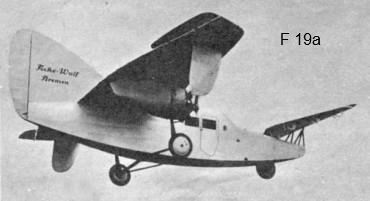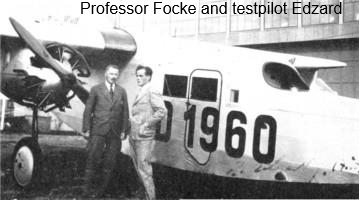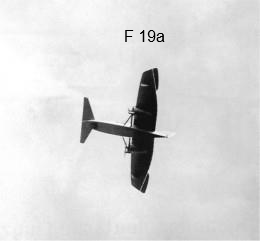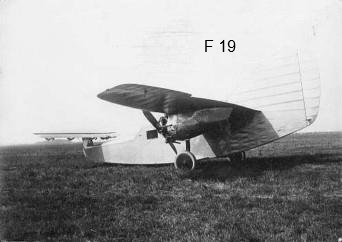The F 19 Ente was a high-wing monoplane with a canard layout and fixed tricycle undercarriage. The pilot sat in an open cockpit, while an enclosed cabin was provided for two or three passengers. The canard was mounted on short struts above the nose of the aircraft, ahead of the cockpit, and the two engines were housed in nacelles mounted under the wings.
The F 19 design was set so that the front stabilizer would stall some moments before the rear-mounted main wing, which in theory made the Ente virtually stall proof.
The first example flew on 2 September 1927 but was destroyed on 29 September during a demonstration of single-engine flight, after a control rod snapped. Focke-Wulf co-founder Georg Wulf was killed in the crash. Nevertheless, a second aircraft (D-1960) was built, flying in late 1930. This was used for a promotional tour of Europe the following year that took it to Denmark, Sweden, the Netherlands, Belgium, and the UK. On 7 November 1931, it was demonstrated at Hanworth Air Park, flown by Focke-Wulf chief pilot Cornelius Edzard.
Later, it was put on display at the Deutsche Luftfahrtsammlung, where it was destroyed in an Allied air raid in 1944.
* replacement for the first aircraft, same WerkNr.
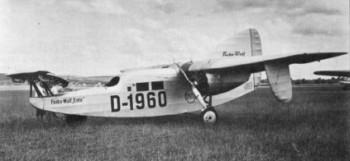
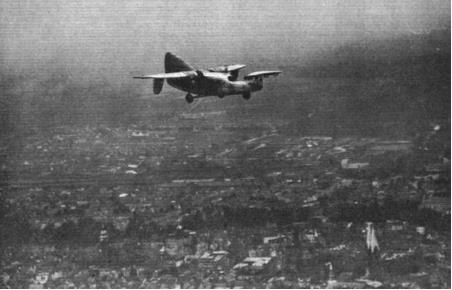
Fw Ente Flight October 1927
ACCIDENT TO THE FOCKE-WULF " ENTE
IN our issue of October 6. we briefly recorded the fact that during a test flight with the Focke-Wulf " Ente " (described and illustrated in FLIGHT on September 29, 1927), one of the directors of the firm, Herr Wulf, who was piloting the machine, crashed with fatal consequences. We have now received from the Focke-Wulf firm further particulars of the circumstances of the crash.
After official examination of the wreckage, it can be stated that the accident was neither due to a constructional defect, nor to weather conditions. What lias been established with certainty is that Herr Wulf intended to make a straight flight with one engine stopped, a manoeuvre which he had previously carried out several times successfully. On this occasion, it appears that Herr Wulf, as previously, tilted the front plane laterally, to counteract the turning moment of the wing engine, and for some 15- 20 sees, all went well. Then, for some reason which has not been explained, some disturbance in the balance between the outboard thrust of the engine and the lateral component of the lift of the tilted front plane took place. The machine went into a turn which became more and more rapid, and was accompanied by a dive. The pilot brought the front plane to its central position, and actually succeeded in converting the turn into a straight, steep glide. By this time, however, the machine had insufficient altitude, and hit the ground. Had the pilot been only a few feet higher at the start (the turn commenced at a height of but 80 m. (265 ft.)), there is every reason to believe that he would have been able to avoid the crash.
As it was, it appears to have been sheer hard luck which led to the pilot sustaining fatal injuries. The machine did not telescope, and the fuselage merely broke in two. Front plane, main plane, engines and control surfaces suffered relatively small damage.
It is pointed out that, as the laterally-tilting front plane is not a fundamental feature of the " tail-first " machine, but was incorporated to give extra directional control for use when one engine stopped, the accident is not really directly attributable to the " tail-first " principle in general. We gather that it is intended to continue the experiments in spite of the temporary set-back sustained by the accident.
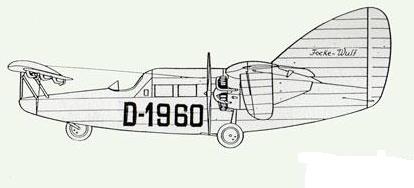
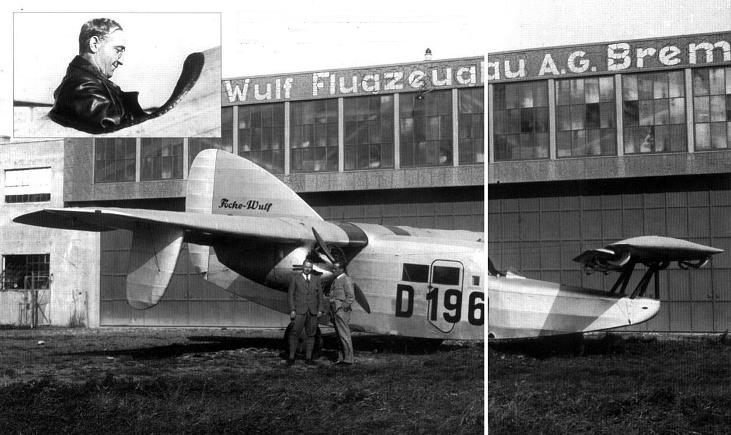
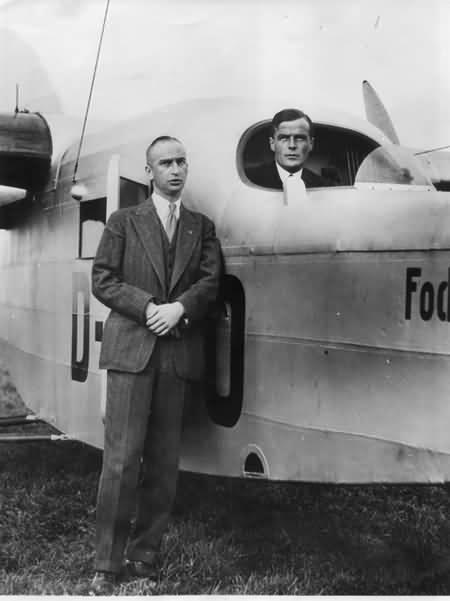
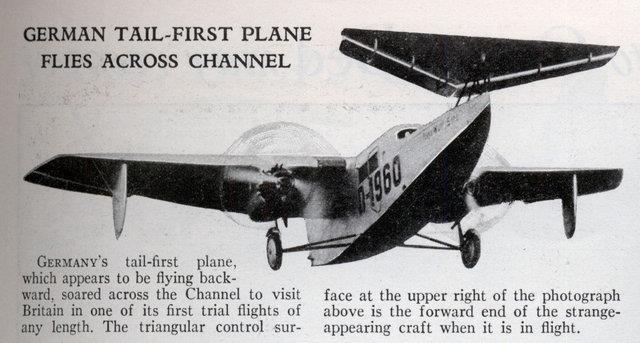
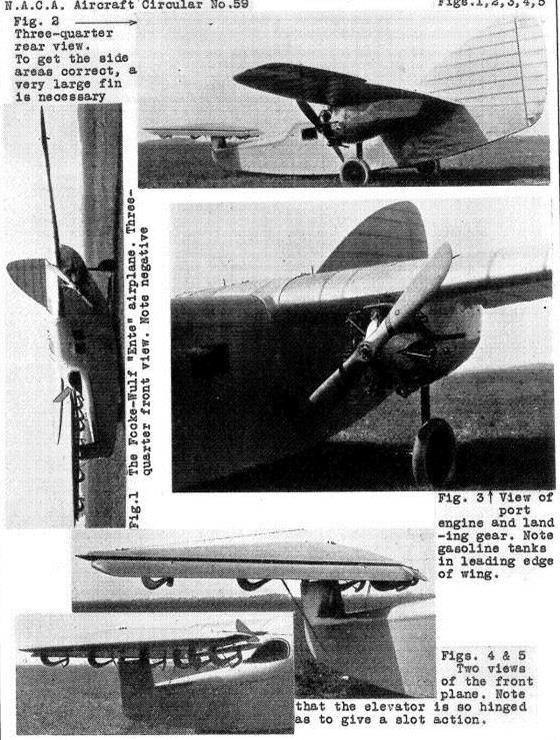
| Type |
1 + 3 seat canard airliner |
1 + 3 seat canard airliner |
| Engine |
2 Siemens Sh 11, 2-blades wooden "Astra" prop. made by Fa. Steininger & Co Ø 2.45 m |
2 Siemens Sh 14 |
| Dimensions |
Span main wing 14.0 m, span nose wing 5.00 m, length 10.50 m, wing area main wing 29.5 m2, nose wing 6.0 m2 |
Span main wing 14.0 m, span nose wing 5.20 m, length 10.53 m, wing area main wing 29.5 m2, nose wing 6.2 m2, height 4.15 m |
| Weights |
Empty 1140 kg, flying weight 1590 kg, fuel 2 x 125 l, oil 2 x 12 l |
Empty 1175 kg, flying weight 1650 kg |
| Performance |
Max. speed 130 km/h, climb to 1000 m 12 min. (est.) |
Max. speed 140 km/h, cruising speed 128 km/h, landing speed 83 km/h,
climb to 1000m 8.3 min.,service ceiling 3000 m |
| Type |
Werk.Nr |
Registration |
History |
| F 19 |
35 |
None |
First flight in 2nd of sept. 1927, Crashed 29 sept. 1927 , Georg Wulf was killed |
| F 19a |
35* |
D-1960, D-OBIR |
First flight in 25th of April 1930 with Edzard as pilot, testing continued until 27th of August 1930 when the permission for commercial use was granted.Registration 1st of September 1930. Delivered to D.V.L. Made a
demonstration tour to Denmark and Sweden in 1931. End of 1931 to Netherland, Belgium and UK. Used at the DVL up to 1939. Part of the Deutsche Luftfahrtsammlung in Berlin, destroyed in the bombing end of 1944. |
